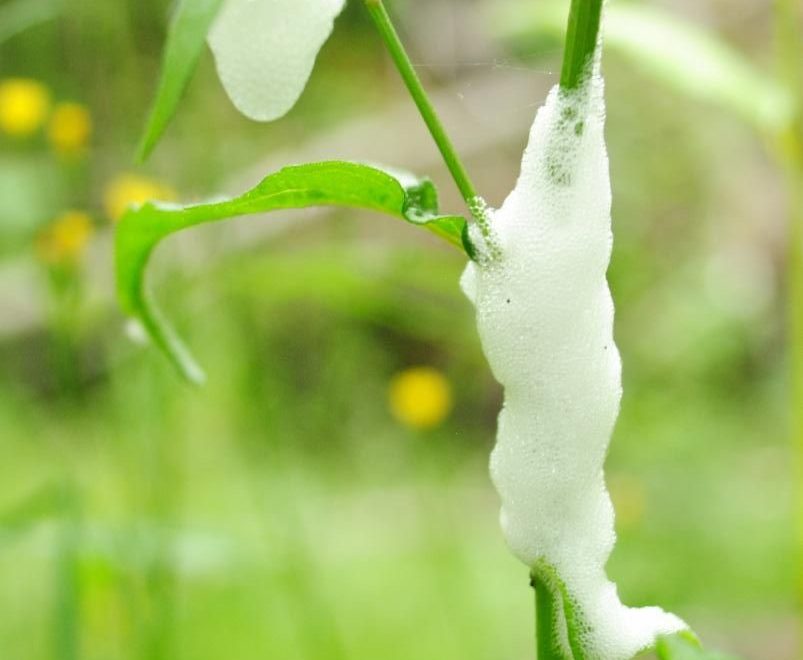
Spittlebug Signs
| Who spit in the garden? Maybe some of you noticed a frothy, saliva-like mass on plants in your gardens or parks this spring and early summer. Perhaps you wondered if it was a disease, or an animal disliking your plant after trying it and deciding to spit it out. The presence of “spittle” is an easy way to identify spittlebugs, known for the foamy mix they produce while feeding on plants during their nymph stage. Most insects that feed on sap utilize the nutrient-rich fluid from the phloem. Spittlebugs, however, uniquely feed on the more dilute, water-carrying xylem of the plant. In order to get the nutrients that they need from the xylem, they must ingest large quantities. The excess water they consume from this feeding behavior is excreted and mixed with air as it is forced out of the abdomen (under pressure) to produce the frothy substance they are named after. The mixture they create does not come out of their mouth, so technically it isn’t spit. The mix is excreted out the anus while the bugs feed face down. The foam then flows downward and completely covers their body. The bugs are consumed by the foam which is much more than a waste product. It actually provides several benefits for the insect: it hides them from the view of some predators, and the unpleasant taste of the substance deters others. The foam also insulates the insect against heat and cold, providing thermal as well as moisture control. During early summer, the nymphs molted into adults (often called froghoppers) which no longer produce spit but are quick and mobile, jumping from plant to plant, rarely noticed. Eggs will be laid on host plants in the fall where they will hatch in the spring. So next spring when you see signs of spittle, remember no one spit in the garden, it is just another example of the clever and crafty ways that nature finds a way. |

